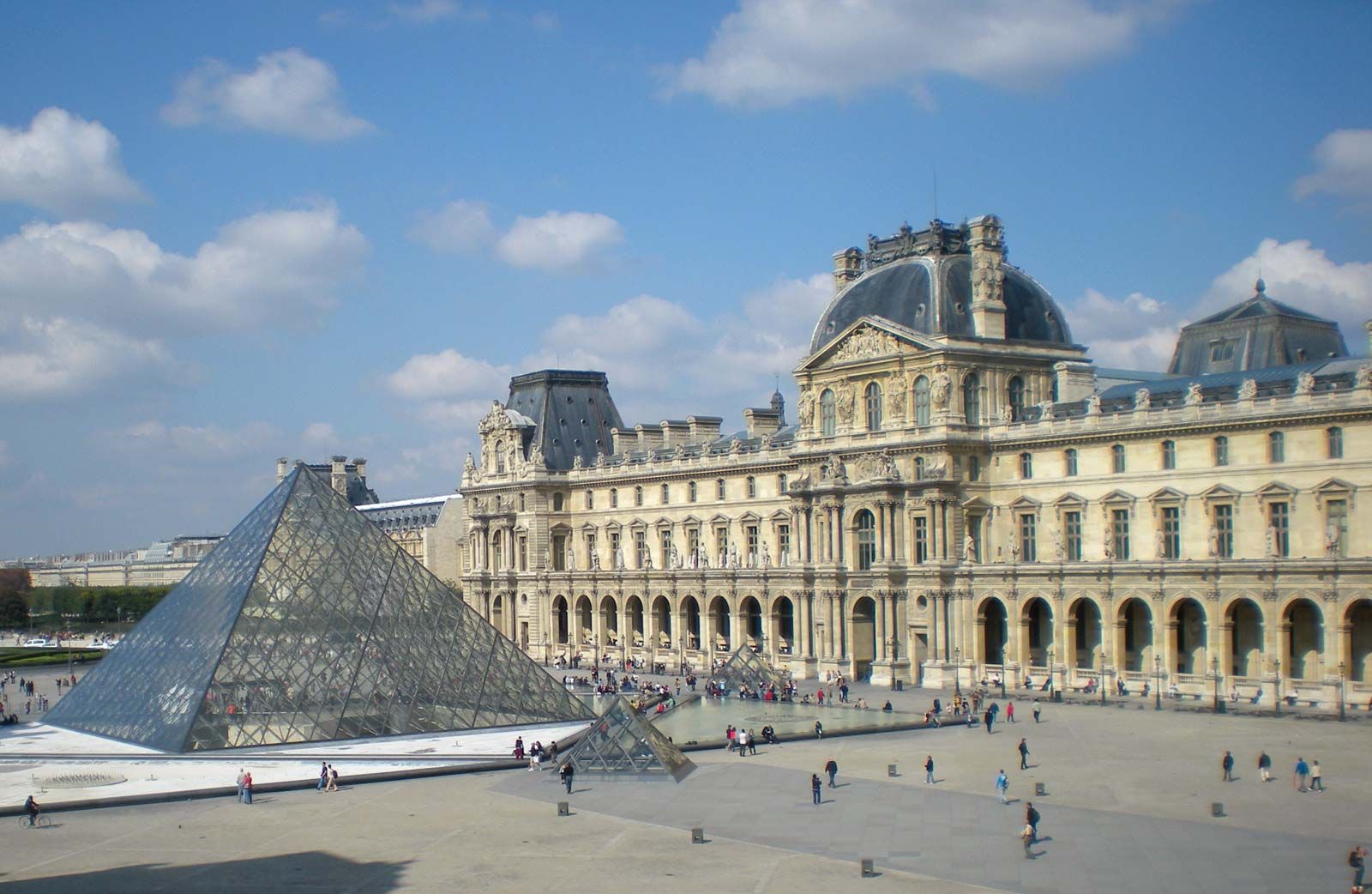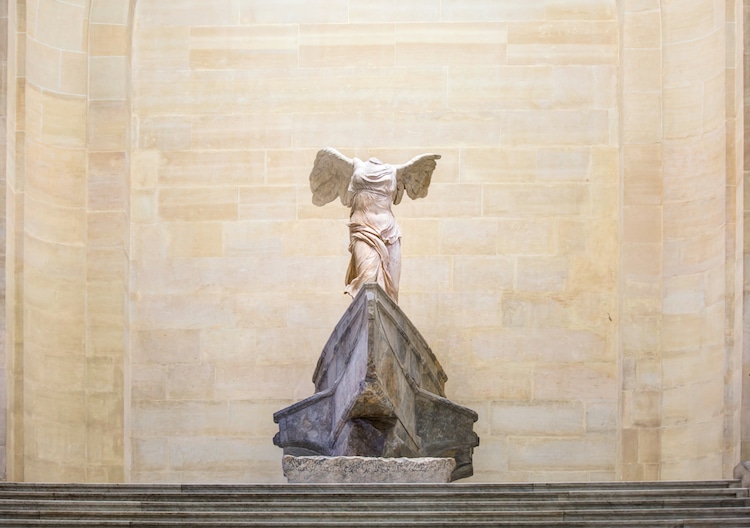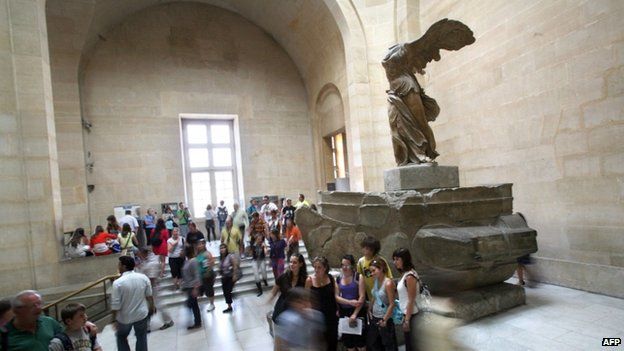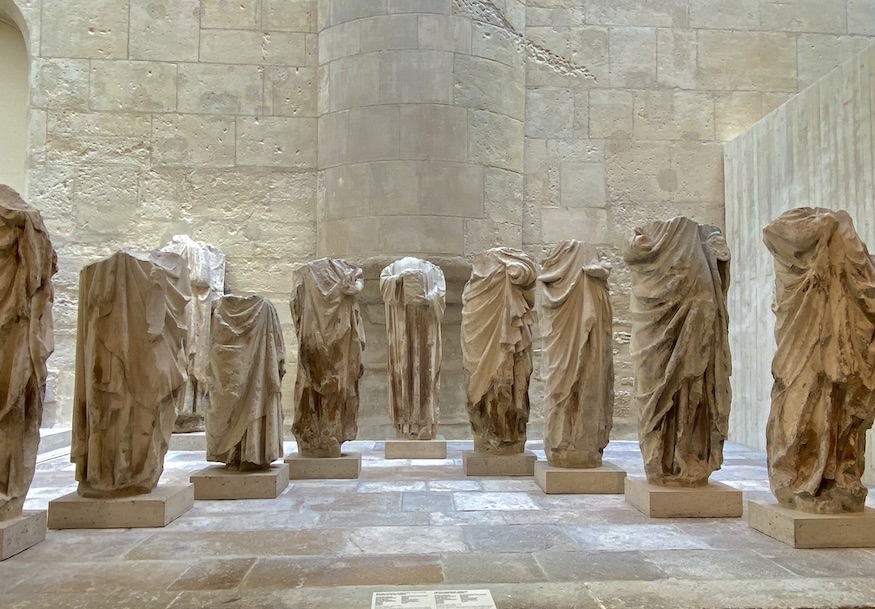Even though the statue of the god of victory of Samothrace is missing its head, it is still a marble masterpiece that attracts special attention from visitors when visiting the Louvre museum in Paris, France.

The Louvre Museum on the banks of the Seine River in Paris, France is one of the most famous and tourist-attracting museums in the world. The Louvre is the most visited paid attraction in Paris. This place displays the most famous works of art history such as the statue of Venus, the Mona Lisa, the painting of the Goddess of Liberty leading the people, and valuable artifacts of ancient civilizations. such as the stone slab recording the Hammurabi code, the Mesha stele…. At this famous museum, the statue of the god of victory Samothrace is also one of the artistic masterpieces that attracts a large number of viewers.
The Statue of Victory of Samothrace is one of the most famous ancient sculptures today, but many people may not be aware of its history – including its ancient origins and its profound influence on modern art. and contemporary.
According to the Louvre, this statue may have been crafted by the people of Rhodes, a Greek island, in the early second century BC. The statue was created during the Hellenistic period. The art movement at that time was especially famous for its sculptures depicting the expressions of mythological subjects in motion, which is why this statue has beautiful wings.

Statue of the god of victory Samothrace located at the Louvre museum in France. (Photo: Shutterstock)
The approximately 5.5 m tall sculpture of the Statue of Victory of Samothrace depicts Nike, the Greek goddess of victory. The statue “wore” a frilly outfit that got wet and was blown by the wind, clinging tightly to her body. The statue has beautiful wings standing in front of a ship. Therefore, historians conclude that the statue was created to commemorate a successful naval battle at sea.
The Statue of Victory of Samothrace is one of many marble compositions that decorate the Sanctuary of the Great Gods, an ancient temple complex on the island of Samothrace, Greece. This seaside temple is dedicated to the religion called the Mysteries, also known as the Great Mother.
Given the popularity of naval battles during this period and its proximity to widely used shipping routes across the Aegean Sea, the temple contains a number of marine-inspired monuments. These include specially dedicated stone columns, particularly important ships and the statue of the victorious god Samothrace – placed in a rock niche (possibly a cave) overlooking the temple’s theater.

The headless statue attracts many visitors (Photo: Shutterstock)
French diplomat and amateur archaeologist Charles Champoiseau unearthed this beautiful statue in April 1863. While gathering 23 blocks of stone to create the ship, he sent the statue of the god of victory back. Paris consists of three pieces with the base, body, legs and left wing. After arriving at the Louvre, the statue was reassembled in the Carytid room of classical antiquities. The museum added a plaster wing to the statue but did not recreate the missing head or arms.
Nearly 90 years after Champoiseau found this beautiful sculpture, archaeologists from Austria discovered other pieces of the statue including Nike’s right hand. Unfortunately, there is no way to reattach the hand to the sculpture, as the statue does not have an arm. However, the excavation of the statue’s hand was extremely important, as this hand refuted the original hypothesis that the statue would have a hand grasping an object.
The Louvre Museum explains: “It has been suggested that the statue may have held a trumpet, a wreath or a silk ribbon in his right hand. However, the hand found in Samothrace in 1950 had a The hand is open and the two fingers are spread out, indicating that the statue is not holding anything and is merely raising its hand in greeting.
Today, the severed hand from the statue is displayed at the top of the Daru staircase of the Louvre, where the winged statue of Samothrace has been on display since 1883.
Like other Greek sculptures, the Statue of Victory of Samothrace was admired for its flawless, realistic depiction of movement. To suggest a body in motion, the sculptor positioned Nike in an asymmetrical pose, which implies movement through the use of realistic weight distribution and an S-shaped body. Other famous sculptures that demonstrate this classical approach to conveying the beauty of the human body are Rodin’s The Walking Man and Michelangelo’s David.

Another element that helps the statue appear to be moving is the fabric covering the figure’s body. As Nike moved forward, the seemingly translucent shirt twisted around her waist and wrapped around her legs. According to the Louvre museum: “the statue is the ultimate showman and very lively, combining the perfection of the goddess, the wide wingspan and the vitality of a body moving forward”.

Today, the Statue of Victory of Samothrace is one of the most famous sculptures in the world. Since its debut at the Louvre in the 19th century, it has inspired countless artists such as surrealist artist Salvador Dalí and futurist Umberto Boccioni. Although there have been a number of modern works that capture the spirit of the Statue of Victory, there is certainly no work that can fascinate viewers like when admiring firsthand the beauty of the original Statue of Victory of Samothrace.






